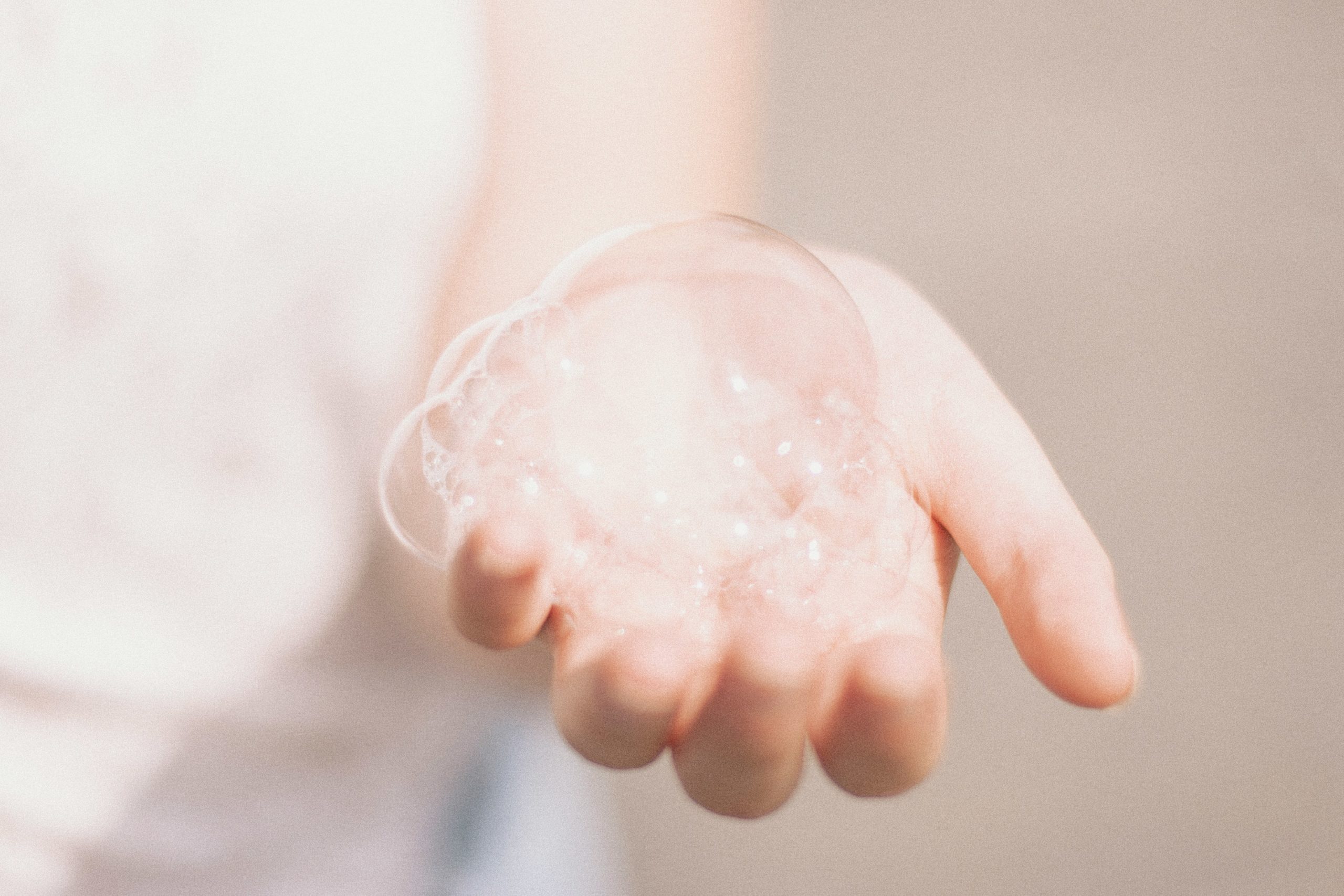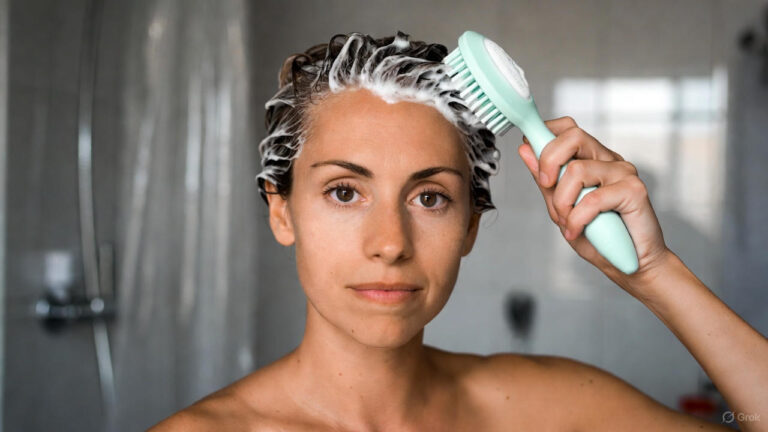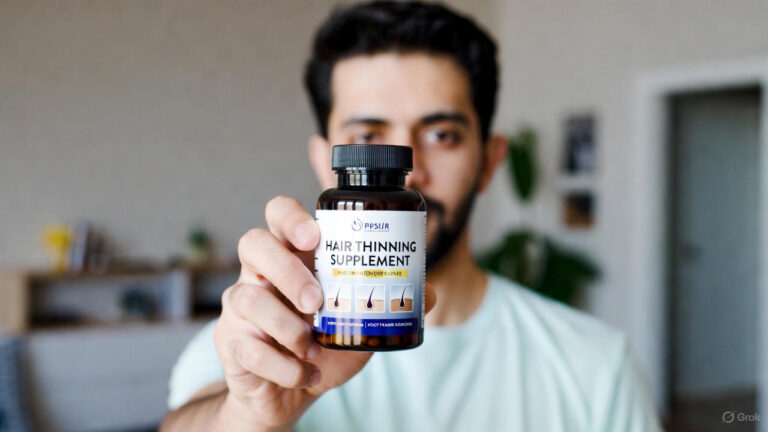Finding time to wash and style your hair daily can be a challenge. Enter dry shampoo: a quick and convenient solution to refresh and revive greasy hair without the need for water.
While commercial dry shampoos are readily available, some contain harsh chemicals and artificial fragrances that can strip the hair of its natural oils and cause irritation.
Fortunately, there’s a natural alternative: DIY dry shampoo. By using simple ingredients found in your pantry, you can create homemade dry shampoo recipes that are gentle, effective, and environmentally friendly.
In this article, we’ll explore the benefits of DIY natural dry shampoo, provide step-by-step recipes for different hair types, and address common questions to help you achieve fresh, clean hair the natural way.
The Benefits of DIY Natural Dry Shampoo
Commercial dry shampoos often contain ingredients like aerosols, talc, and synthetic fragrances, which can irritate the scalp and leave residue behind.
DIY natural dry shampoo, on the other hand, utilizes gentle, plant-based ingredients that absorb excess oil, neutralize odors, and promote scalp health without harsh chemicals.
Additionally, homemade dry shampoo recipes are customizable, allowing you to tailor them to your hair type and preferences.
DIY Natural Dry Shampoo Recipes
Recipe 1: Basic Cornstarch Dry Shampoo
Ingredients:
- 1/4 cup cornstarch
- 2 tablespoons cocoa powder (for dark hair) OR 2 tablespoons arrowroot powder (for light hair)
- 5-10 drops of essential oil (optional, for fragrance)
Instructions:
- In a small bowl, mix together the cornstarch and cocoa powder (or arrowroot powder).
- Add the essential oil, if using, and mix well to combine.
- Transfer the mixture to a clean, dry container with a shaker or sprinkle lid.
- To use, shake a small amount of the dry shampoo onto your roots, focusing on oily areas. Massage into the scalp and brush or comb through to distribute evenly.
Recipe 2: Oatmeal Dry Shampoo for Sensitive Scalp
Ingredients:
- 1/4 cup finely ground oatmeal
- 2 tablespoons baking soda
- 5-10 drops lavender essential oil (optional, for fragrance)
Instructions:
- In a blender or food processor, pulse the oatmeal until finely ground.
- Transfer the ground oatmeal to a small bowl and add the baking soda.
- Add the lavender essential oil, if using, and mix well to combine.
- Store the dry shampoo in a clean, dry container with a shaker or sprinkle lid.
- To use, shake a small amount of the dry shampoo onto your roots and massage into the scalp. Brush or comb through to distribute evenly.
Recipe 3: Herbal Infused Dry Shampoo
Ingredients:
- 1/4 cup arrowroot powder
- 2 tablespoons dried herbs (such as lavender, rosemary, or chamomile)
- 5-10 drops rosemary essential oil (optional, for fragrance)
Instructions:
- In a clean, dry container, combine the arrowroot powder and dried herbs.
- Add the rosemary essential oil, if using, and mix well to combine.
- Allow the mixture to sit for at least 24 hours to allow the herbs to infuse.
- Strain out the dried herbs and transfer the infused dry shampoo to a container with a shaker or sprinkle lid.
- To use, shake a small amount of the dry shampoo onto your roots and massage into the scalp. Brush or comb through to distribute evenly.
Conclusion
DIY natural dry shampoo offers a convenient and eco-friendly alternative to commercial products, allowing you to refresh and revive your hair without harsh chemicals or artificial fragrances. Whether you prefer a basic cornstarch formula, a soothing oatmeal blend, or an herbal-infused recipe, there’s a homemade dry shampoo to suit every hair type and preference. By incorporating these DIY recipes into your beauty routine, you can achieve fresh, clean hair while promoting scalp health and reducing your environmental footprint.
FAQs
Q1: Can I use DIY natural dry shampoo on colored or treated hair?
Yes, DIY natural dry shampoo is safe to use on colored or treated hair. However, it’s essential to choose ingredients that won’t strip or damage your hair color. Avoid using baking soda or ingredients with abrasive textures, as they may cause color fading or unevenness.
Q2: How often should I use DIY natural dry shampoo?
It’s best to use DIY natural dry shampoo as needed to absorb excess oil and refresh your hair between washes. Overuse of dry shampoo can lead to buildup and scalp issues, so listen to your hair’s needs and avoid using it excessively.
Q3: Can I store DIY natural dry shampoo for later use?
Yes, DIY natural dry shampoo can be stored in a clean, dry container with a shaker or sprinkler lid for later use. Keep it in a cool, dry place away from direct sunlight to prolong its shelf life.
Q4: Are there any alternatives to cornstarch or arrowroot powder?
Yes, you can substitute other absorbent powders such as rice flour, tapioca starch, or even finely ground oats in place of cornstarch or arrowroot powder. Experiment with different ingredients to find the best option for your hair type.
Q5: Can I customize the fragrance of DIY natural dry shampoo?
Yes, you can customize the fragrance of DIY natural dry shampoo by adding a few drops of your favorite essential oils. Popular options include lavender, rosemary, peppermint, and citrus oils. Just be sure to choose essential oils that are safe for topical use and suitable for your hair and scalp.



